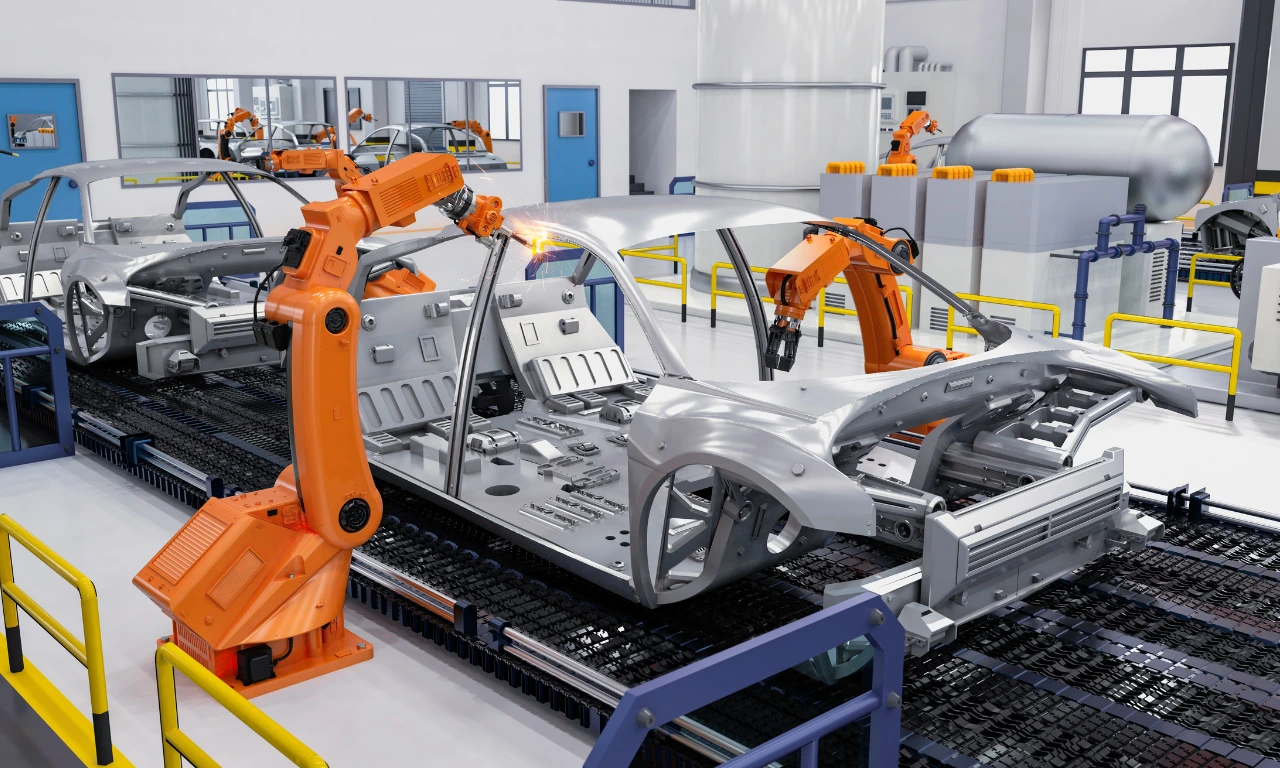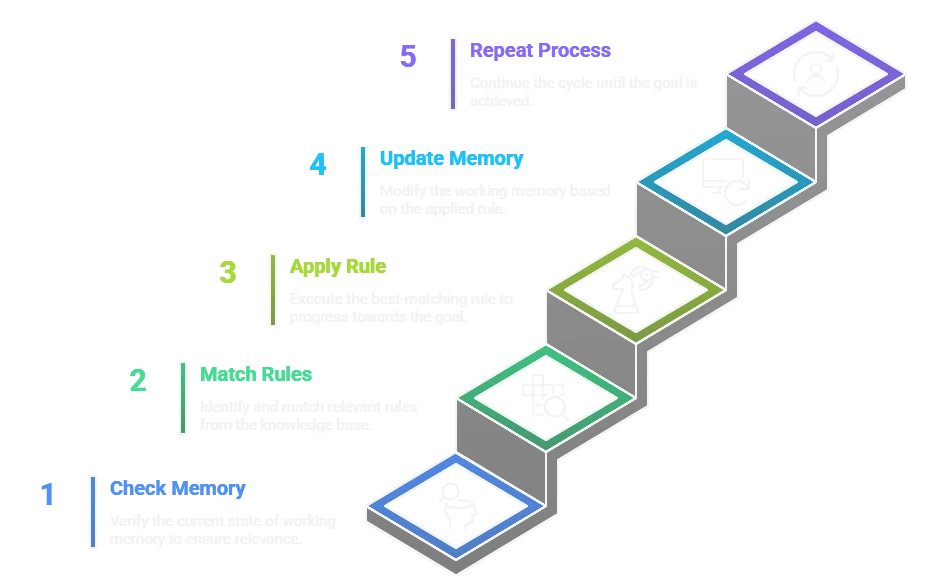Production System in AI: Characteristics, Examples with Diagram

What if machines could solve complex problems by following clear, logical rules - just like expert systems do when diagnosing diseases or fixing equipment issues? Production systems in AI are the core frameworks that let machines make smart decisions using these structured reasoning methods.
These systems use if-then rules to store knowledge and solve problems step by step. For example, a medical system might say, "if a patient has fever, cough, and tiredness, then check for a viral infection" to help diagnose. Read this blog to learn how AI production systems work and what their main parts are.
What Are Production Systems in AI?
A Production System in Artificial Intelligence is a rule-based mechanism used to model intelligent behavior. It is a foundational concept in problem-solving, decision-making, and automated reasoning.
Production systems are foundational to building agentic AI, which refers to AI systems capable of autonomous, goal-directed behavior through logical reasoning.
A production system in AI is essentially a clever problem-solving method that consists of three major components: a set of rules, a working memory, and a control system. Rules called Productions are basic IF-THEN commands, such as "If it's dark and the light is off, turn it on."
4 Key Characteristics of Production System in AI
It is important to understand the key features of AI production systems. This explains how they support smart reasoning and decision-making.
-
Rule-based knowledge representation
Rule-based systems put expert knowledge into clear rules that machines can follow to make logical decisions. These rules show how conditions lead to actions in specific areas. This helps apply expert knowledge consistently across different problems.
-
Condition-action pairs (if-then rules)
If-then rules connect specific conditions to suitable responses or conclusions. They allow clear reasoning by stating when particular actions should occur based on what is observed. This clear format makes AI production systems ideal for transparent decision-making.
-
Working memory for storing facts
Working memory acts as busy storage, holding facts, observations, and partial conclusions as problems are solved. It keeps track of the current state and provides information rules that can be used during reasoning. This allows AI systems to maintain context through complex thinking.
-
Inference engine for rule matching and execution
The inference engine controls reasoning by matching facts to rules and taking action when conditions are met. It decides which rules to use and when during problem-solving. This makes the rules work dynamically to solve complex problems.
How Production Systems Work in AI?

AI production systems operate by following rules, updating facts, and making conclusions sequentially. The inference engine reviews all rules to identify those matching facts in working memory. It looks at all possible rules before deciding which one to use.
As soon as a rule fires, it updates its working memory with new facts or takes action from its conclusion. The system then runs the matching again with these new facts, possibly activating new rules. This keeps going until no more rules apply or the goal is met.
Logical manipulation of symbols representing domain concepts and relationships drives the entire process through symbolic reasoning. The system ensures logical consistency by making sure conclusions follow from premises and rules. This allows AI production systems to explain their conclusions by tracing reasoning from facts to final outcomes.
Production systems can be viewed as the decision-making core of a rational agent, which acts to maximize the achievement of its goals based on available information.
3 Production System Types in AI

Different types of AI systems work with information and make decisions in their own ways, depending on the task.
-
Basic production systems
Basic production systems in AI implement straightforward reasoning where rules fire when their conditions match facts in working memory without complex control mechanisms.
These systems process rules in simple order, applying the first matching rule found during each reasoning cycle. They work effectively for domains with clear, non-conflicting rules where reasoning paths are relatively straightforward.
-
Monotonic production systems
Monotonic systems keep adding facts without deleting or revising earlier ones. Once a fact is accepted, it holds true through all reasoning. This ensures stable logic and avoids contradictions. They work well in domains where information increases but never needs correction.
-
Nonmonotonic production systems
In AI, nonmonotonic systems can change or take back earlier facts when fresh information conflicts with them. This allows the system to revise beliefs as new evidence appears. They're well-suited for fast-changing areas where initial ideas might turn out to be wrong, and thinking needs to shift.
Top 3 Components of Production Systems in AI

The architecture of production systems in AI relies on three essential components that work together to enable intelligent reasoning and problem-solving capabilities.
-
Knowledge base (set of rules)
The knowledge base works like a brain full of expert advice written in an f-then format. It links situations to actions using rules based on real expert thinking. The smarter and more complete this brain is, the better the system performs in real problem-solving.
-
Working memory (facts and data)
Working memory stores everything about the current problem: early facts, new inputs, and ongoing results. It updates as conditions change or new data is found. This setup allows the system to follow each step and stay on track through detailed reasoning.
-
Inference engine (rule interpreter)
The inference engine decides how to use rules to solve problems. It picks which rules to follow and when to apply them. It uses forward or backward steps depending on whether it starts with facts or goals. Its speed and method affect how well the system works.
Applications of Production Systems in AI
| Field | Applications |
|---|---|
| Healthcare | Medical diagnosis systems, treatment planning, drug interaction checking, symptom analysis |
| Manufacturing | Quality control systems, process optimisation, equipment troubleshooting, maintenance scheduling |
| Finance | Credit scoring, fraud detection, investment advice, risk assessment |
| Education | Intelligent tutoring systems, student assessment, curriculum planning, learning path recommendation |
| Expert systems | Domain-specific consultation systems, troubleshooting guides, decision support tools |
| Legal | Case analysis, contract review, legal research assistance, compliance checking |
| Engineering | Design validation, system configuration, fault diagnosis, specification checking |
| Agriculture | Crop management, pest identification, soil analysis, irrigation planning |
Difference Between Monotonic and Nonmonotonic Production Systems in AI
| Feature | Monotonic Production Systems in AI | Nonmonotonic Production Systems in AI |
|---|---|---|
| Fact Management | Facts once established remain permanently true | Facts can be retracted or modified based on new information |
| Reasoning Direction | Forward chaining from established facts to conclusions | Both forward and backward chaining with belief revision |
| Information Handling | Assumes complete and consistent information | Handles incomplete, uncertain, or changing information |
| Logical Consistency | Maintains strict logical consistency throughout | Allows temporary inconsistencies during belief updates |
| Problem Domains | Suitable for stable domains with complete information | Ideal for dynamic domains with evolving knowledge |
| Computational Complexity | Generally simpler and more efficient | More complex due to belief revision mechanisms |
| Truth Maintenance | No need for truth maintenance systems | Requires sophisticated truth maintenance mechanisms |
| Decision-making in AI | Decisions based on accumulated certain knowledge | Decisions adapt to new evidence and changing circumstances |
Conclusion
Production systems in AI are foundational frameworks that demonstrate how clear knowledge and step-by-step reasoning create intelligent behavior in machines.
By keeping knowledge and logic separate, they make complex decision-making easier to understand and manage. These principles continue to influence today’s AI, especially in scenarios that demand transparent and expert-driven reasoning.
At GrowthJockey, we specialize in delivering enterprise AI solutions that blend classic rule-based and expert system approaches with the latest advancements in machine learning to help businesses strategically scale AI revenue.
Our expertise ensures we build AI systems that are not only powerful but also explainable and trustworthy helping enterprises unlock real business value with confidence. Let’s connect if you want AI solutions you can truly understand and rely on.








